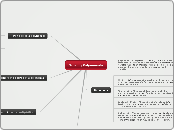Solving Polynomials
Definitions
polynomials- an expression consisting of the sum of two or more terms each of which is the product of a constant and a variable raised to an integral power: ax 2 + bx + c is a polynomial, where a, b, and c are constants and x is a variable.
X-intercepts/zeros- A point at which a graph intersects the x-axis. The x-intercepts of a function must be real numbers, unlike roots and zeros.
Turning points- The ups and downs on a graph. The maximum possible number of turning points is one less than the degree of the polynomial.
Leading Coeffiecient- The coefficient of a polynomial's leading term. For example, 7 is the leading coefficient of 7x^4 – 6x^3 + 4x^2 + 2x – 12.
End behavior- The appearance of a graph as it is followed farther and farther in either direction. For polynomials, the end behavior is indicated by drawing the positions of the arms of the graph, which may be pointed up or down.
How to solve a polynomial
if not given any zeros- set the whole equation equal to zero. then use quadratic formula ro solve for x.
if given two real zeros- factor and solve the formula.
if given a complex zero- factor the fourmula into pairs and solve them.
if given a real zero-
How to identify the degree of a polynomial
By turning points- You can identify the degree of a polynomial by looking at how many turning pointsit has and add 1. ex. if it has 4 turning points then it is a 5th degree polynomial.
By zero's- At these ‘x’ values, its graph cuts or touches the ‘x’ axis. The maximum number of zeros of a polynomial is the same as its degree.
By end behavior / + or – leading coefficient / even or odd degree-
1. If the degree n of a polynomial is even, then the arms of the graph are either both up or both down.
2. If the degree n is odd, then one arm of the graph is up and one is down.
3. If the leading coefficient is positive, the right arm of the graph is up.
4. If the leading coefficient an is negative, the right arm of the graph is down.
How to identify multiplicities
even- by looking at the exponent. ex. (x+3)^2
odd- by looking at the number of times it is multiplied. ex. (x+4)^3
How to identify the number of real or complex zeros
real zeros cross at the x axis and complex zeros do not coross the x axis but curve on it.
